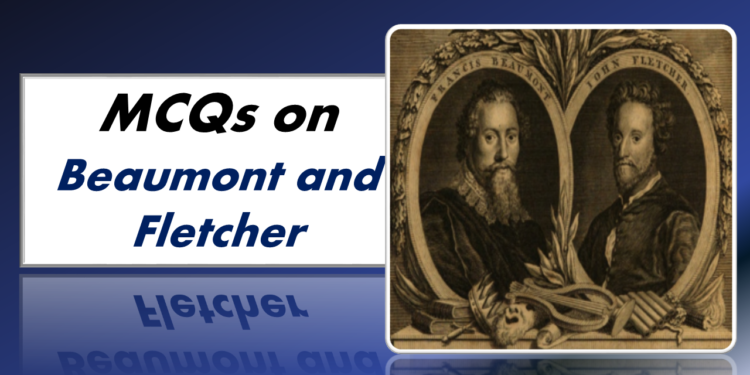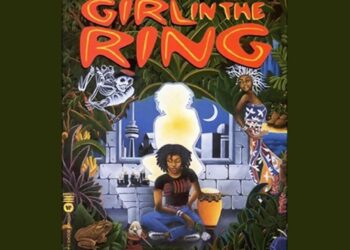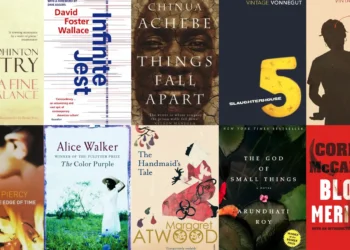MCQs on Beaumont and Fletcher
MCQs on Beaumont and Fletcher-What was Francis Beaumont known for?,What is the tragicomedy of Beaumont and Fletcher?,What was John Fletcher famous for?,
1. Who were the two playwrights associated with the collaborative works known as Beaumont and Fletcher?
a. Christopher Marlowe and Ben Jonson
b. William Shakespeare and John Webster
c. Francis Beaumont and John Fletcher
d. Thomas Kyd and Thomas Middleton
2. Which genre is most commonly associated with the plays of Beaumont and Fletcher?
a. Tragedy
b. Comedy
c. HistoryBeaumont and Fletcher
d. Romance
3. What is the title of one of the most famous tragic plays written by Beaumont and Fletcher?
a. “The Knight of the Burning Pestle”
b. “The Tamer Tamed”
c. “The Maid’s Tragedy”Beaumont and Fletcher
d. “The Roaring Girl”
4. Beaumont and Fletcher were active during which period of English literature?
a. Elizabethan era
b. Jacobean era
c. Restoration era
d. Victorian era
5. Which of the following is NOT a title of a play attributed to Beaumont and Fletcher?
a. “Philaster, or Love Lies a-Bleeding”
b. “The Alchemist”
c. “A King and No King”
d. “The Scornful Lady”
6. What role did Francis Beaumont play in the collaborative writing of Beaumont and Fletcher’s plays?
a. Primary playwright
b. Actor
c. Editor
d. Producer
7. John Fletcher continued to write plays after the death of Francis Beaumont. What role did Fletcher play in the later years of his career?
a. Solo playwright
b. Actor
c. Diplomat
d. Poet laureate
8. Which of the following genres is NOT represented in Beaumont and Fletcher’s collaborative works?
a. Tragedy
b. Comedy
c. HistoryBeaumont and Fletcher
d. Mystery
9. Beaumont and Fletcher’s play “Philaster” is often categorized as a:
a. Tragedy
b. Comedy
c. Tragicomedy
d. FarceBeaumont and Fletcher
10. What is the title of the play that satirizes the conventions of romantic drama and chivalry, written by Beaumont and Fletcher?
a. “The Knight of the Burning Pestle”
b. “The Maid’s Tragedy”
c. “A King and No King”
d. “The Roaring Girl”
11. Which monarch’s court did Beaumont and Fletcher serve during their career as playwrights?
a. Queen Elizabeth I
b. King James I
c. Queen Anne
d. King Charles I
12. Beaumont and Fletcher’s play “The Maid’s Tragedy” is known for its:
a. Historical setting
b. Complex plot and characters
c. Use of supernatural elements
d. Satirical humor
13. Beaumont and Fletcher’s collaborative plays often featured:
a. Blank verse
b. Rhymed coupletsBeaumont and Fletcher
c. Prose dialogue
d. Soliloquies
14. What is the term commonly used to describe plays that were written by more than one author, such as the works of Beaumont and Fletcher?
a. Collaborative drama
b. Hybrid theatre
c. Shared narratives
d. Joint plays
15. Which of the following plays is a tragicomedy written by Beaumont and Fletcher?
a. “The Knight of the Burning Pestle”
b. “The Tamer Tamed”
c. “The Island Princess”
d. “The Changeling”
16. Beaumont and Fletcher’s play “A King and No King” is an example of a:
a. Tragedy
b. Comedy
c. Tragicomedy
d. History play
17. The play “The Knight of the Burning Pestle” is known for its:
a. Historical setting
b. Use of a play within a play
c. Supernatural elements
d. Political intrigue
18. Beaumont and Fletcher’s collaboration is often cited as an example of the flourishing of drama during which era?
a. Elizabethan era
b. Jacobean era
c. Restoration era
d. Victorian era
19. Beaumont and Fletcher’s play “The Changeling” is a:
a. Tragedy
b. Comedy
c. Tragicomedy
d. History play
20. What is the title of the play by Beaumont and Fletcher that explores themes of sexual and political power?
a. “The Knight of the Burning Pestle”
b. “The Roaring Girl”
c. “The Changeling”
d. “The Tamer Tamed”
a. Tragedy
b. Comedy
c. Tragicomedy
d. History play
22. Which of the following is NOT a characteristic of Beaumont and Fletcher’s plays?
a. Intricate plots
b. Moral simplicity
c. Varied and complex characters
d. Use of dramatic and poetic language
23. What is the title of the play by Beaumont and Fletcher that involves a female character disguising herself as a man?
a. “The Knight of the Burning Pestle”
b. “The Roaring Girl”
c. “A King and No King”
d. “The Maid’s Tragedy”
24. Beaumont and Fletcher’s play “The Tamer Tamed” is a sequel to which earlier work?
a. “The Maid’s Tragedy”Beaumont and Fletcher
b. “A King and No King”
c. “The Taming of the Shrew”
d. “The Knight of the Burning Pestle”
25. Beaumont and Fletcher’s play “The Scornful Lady” is known for its:
a. Tragic elements
b. Comedic elements
c. Historical setting
d. Chivalric romance
26. Which of the following is NOT a theme commonly explored in Beaumont and Fletcher’s plays?
a. Love and romance
b. Political intrigue
c. Supernatural elements
d. Economic struggles
27. Beaumont and Fletcher’s play “The Humorous Lieutenant” is an example of a:
a. Tragedy
b. Comedy
c. Tragicomedy
d. History play
28. In Beaumont and Fletcher’s play “The Wild Goose Chase,” what motivates the characters to engage in pursuit and adventure?
a. Revenge
b. Love
c. Political power
d. Wealth
29. Which of the following is a recurring theme in Beaumont and Fletcher’s tragic plays?
a. Comic relief
b. Revenge
c. Romantic love
d. Happy endings
30. What is the title of the play by Beaumont and Fletcher that explores the theme of marital fidelity and features a woman seeking revenge for her husband’s infidelity?
a. “The Tamer Tamed”
b. “The Maid’s Tragedy”
c. “The Roaring Girl”
d. “The Changeling”
31. Beaumont and Fletcher’s play “The Woman Hater” is known for its exploration of:
a. Political power struggles
b. Love and jealousy
c. Supernatural elements
d. Historical events
32. In Beaumont and Fletcher’s play “The Pilgrim,” what motivates the protagonist’s journey?
a. Religious pilgrimage
b. Quest for knowledge
c. Romantic pursuit
d. Political exile
33. Which of the following plays by Beaumont and Fletcher features a central female character who dresses as a man to escape an arranged marriage?
a. “The Changeling”Beaumont and Fletcher
b. “A King and No King”
c. “The Knight of the Burning Pestle”
d. “The Roaring Girl”
34. Beaumont and Fletcher’s play “The Island Princess” is known for its exploration of:
a. Maritime adventures
b. Love across social classesBeaumont and Fletcher
c. Political conspiracies
d. Supernatural elements
35. What is the title of the play by Beaumont and Fletcher that explores themes of betrayal and revenge in a court setting?
a. “The Knight of the Burning Pestle”
b. “The Scornful Lady”
c. “The Maid’s Tragedy”
d. “Philaster, or Love Lies a-Bleeding”
36. In Beaumont and Fletcher’s play “Valentinian,” what historical figure does the protagonist Valentinian represent?
a. Julius Caesar
b. Augustus Caesar
c. Nero
d. Constantine the Great
37. What is the title of the play by Beaumont and Fletcher that features a protagonist who rejects romantic love and becomes a woman-hater?
a. “The Woman Hater”
b. “The Scornful Lady”
c. “The Maid’s Tragedy”
d. “The Tamer Tamed”
38. Beaumont and Fletcher’s play “The Noble Gentleman” is known for its exploration of:
a. Class conflicts
b. Political power struggles
c. Love and romantic intrigues
d. Historical events
39. In Beaumont and Fletcher’s play “The Double Marriage,” what motivates the characters to engage in political machinations and betrayals?
a. Love
b. Ambition
c. Revenge
d. Religious conflicts
40. What is the title of the play by Beaumont and Fletcher that explores themes of jealousy and revenge in a court setting?
a. “The Knight of the Burning Pestle”
b. “The Scornful Lady”
c. “The Maid’s Tragedy”
d. “The Changeling”
41. Beaumont and Fletcher’s play “Wit Without Money” is known for its exploration of:
a. Love and romantic intrigues
b. Political power struggles
c. Supernatural elements
d. Historical eventsBeaumont and Fletcher
42. In Beaumont and Fletcher’s play “The Captain,” what motivates the protagonist’s journey and adventures?
a. Love
b. Revenge
c. Ambition
d. Military duty
43. What is the title of the play by Beaumont and Fletcher that explores themes of courtly love and chivalric romance?
a. “The Knight of the Burning Pestle”
b. “The Maid’s Tragedy”
c. “A King and No King”
d. “The Roaring Girl”
44. Beaumont and Fletcher’s play “The Little French Lawyer” is known for its exploration of:
a. Legal intrigues
b. Political power struggles
c. Love and romantic intrigues
d. Historical events
45. In Beaumont and Fletcher’s play “The Elder Brother,” what motivates the conflict between the two brothers?
a. Love and jealousy
b. Inheritance disputes
c. Political power struggles
d. Revenge
46. What is the title of the play by Beaumont and Fletcher that features a female protagonist who disguises herself as a man and goes on a quest for adventure?
a. “The Roaring Girl”
b. “The Maid’s Tragedy”
c. “A King and No King”
d. “The Tamer Tamed”
47. Beaumont and Fletcher’s play “The Custom of the Country” is known for its exploration of:
a. Love and romantic intrigues
b. Political power struggles
c. Supernatural elements
d. Economic struggles
48. In Beaumont and Fletcher’s play “The Coxcomb,” what motivates the central character’s behavior and actions?
a. Love and romantic intrigues
b. Political power struggles
c. Revenge
d. Foolishness and folly
49. What is the title of the play by Beaumont and Fletcher that features a central character who disguises herself as a man to pursue her love interest?
a. “The Roaring Girl”
b. “The Maid’s Tragedy”
c. “A King and No King”
d. “The Changeling”
50. Beaumont and Fletcher’s play “The False One” is known for its exploration of:
a. Historical events
b. Supernatural elements
c. Love and romantic intrigues
d. Political power struggles
Answer
1. c. Francis Beaumont and John Fletcher
2. b. Comedy
3. c. “The Maid’s Tragedy”
4. b. Jacobean era
5. b. “The Alchemist”
6. a. Primary playwright
7. a. Solo playwright
8. c. History
9. c. Tragicomedy
10. a. “The Knight of the Burning Pestle”
11. b. King James I
12. b. Complex plot and characters
13. a. Blank verse
14. a. Collaborative drama
15. c. Tragicomedy
16. c. Tragicomedy
17. b. Use of a play within a play
18. b. Jacobean era
19. c. Tragicomedy
20. b. “The Roaring Girl”
21. d. History play
22. b. Moral simplicity
23. c. “A King and No King”
24. c. “The Taming of the Shrew”
25. b. Comedic elements
26. d. Economic struggles
27. b. Comedy
28. b. Love
29. b. Revenge
30. d. “The Changeling”
31. a. Political power struggles
32. c. Romantic pursuit
33. c. “A King and No King”
34. b. Love across social classes
35. c. “The Maid’s Tragedy”
36. c. Nero
37. a. “The Woman Hater”Beaumont and Fletcher
38. c. Love and romantic intrigues
39. b. Ambition
40. c. “The Maid’s Tragedy”Beaumont and Fletcher
41. a. Love and romantic intrigues
42. c. Ambition
43. c. “A King and No King”
44. a. Legal intrigues
45. b. Inheritance disputes
46. a. “The Roaring Girl”
47. d. Economic struggles
48. d. Foolishness and folly
49. a. “The Roaring Girl”
50. a. Historical events
Related
















